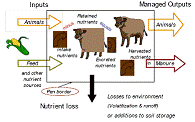Biological Systems Engineering, Department of

Department of Agricultural and Biological Systems Engineering: Presentations and White Papers
Date of this Version
11-2007
Document Type
Article
Abstract
Transfected cell arrays offer a high-throughput method that allows for the parallel analysis of multiple pathways or genes within a physiological context. We have developed a transfected cell array that employs a dual-plasmid system that gives the ability to normalize for spot-to-spot variation in transfection efficiency. Each spot within the array contains a constitutively active normalization plasmid encoding for renilla luciferase as well as a functional plasmid that contains transcription factor specific binding elements driving the expression of firefly luciferase. Dual bioluminescent imaging provides highly sensitive analysis while limiting post-transfectional processing. Adequate transfection poses a significant challenge in extending this two-plasmid system to a higher throughput functional genomic tool. Surface chemistry and drying can affect the bioactivity of robotically spotted DNA/lipid complexes. Non-contact dependent robotic spotting is flexible, and enables pre-treatment of the spotting surface and the inclusion of additives and stabilizers with the lipoplexes. Initial studies investigated the addition of sucrose to stabilize the lipoplexes during the drying process. Transfection in the presence of sucrose is significantly enhanced relative to its absence. Additionally, fibronectin was coated on the surface to stabilize the lipoplex and limit conformational changes after deposition. The inclusion of fibronectin on the surface or in solution with the lipoplexes enhanced the gene transfer efficiency. Finally, pre-coating DNA spots with a sucrose solution significantly increased transfection for dried arrays and could potentially aid in long-term storage. Transfected cell arrays provide a rapid, reproducible, high throughput method, and combined with the dual-plasmid, bioluminescence imaging can enable numerous quantitative studies on cell function.


Comments
Podium presentation, American Institute of Chemical Engineers Annual Meeting, Salt Lake City, UT, November 8, 2007